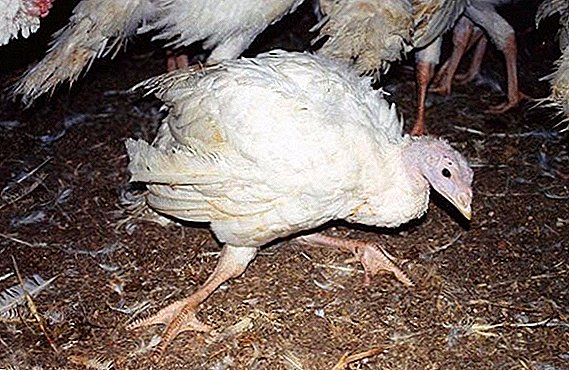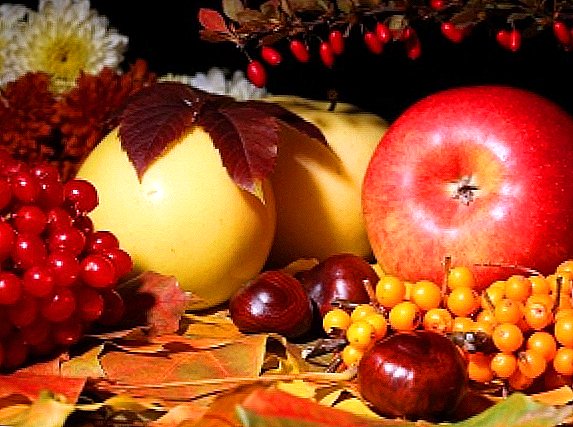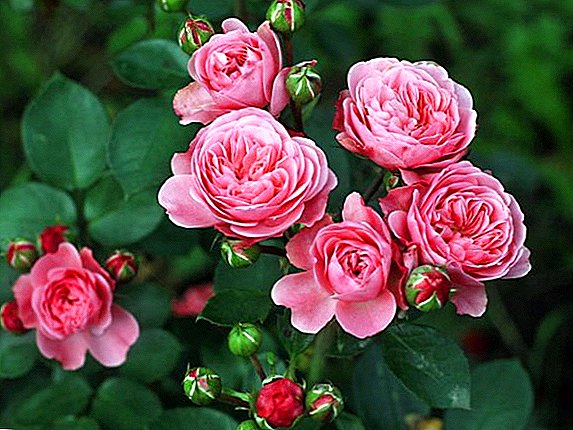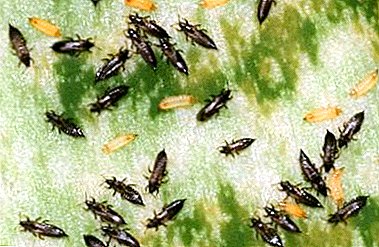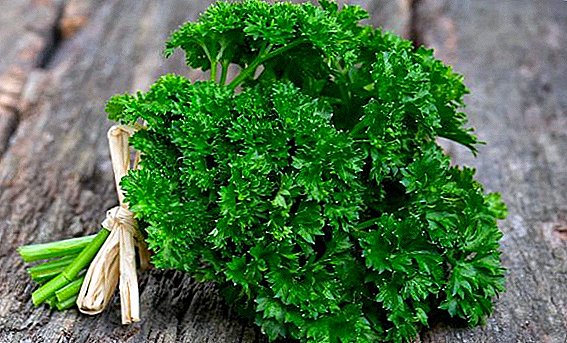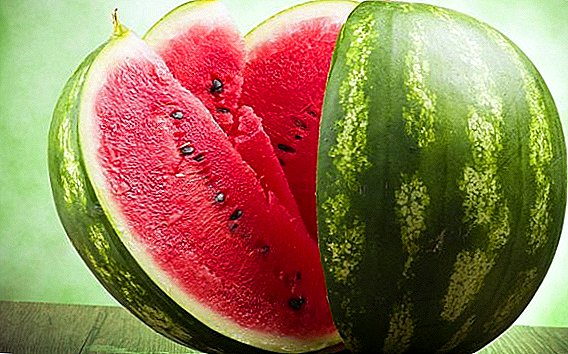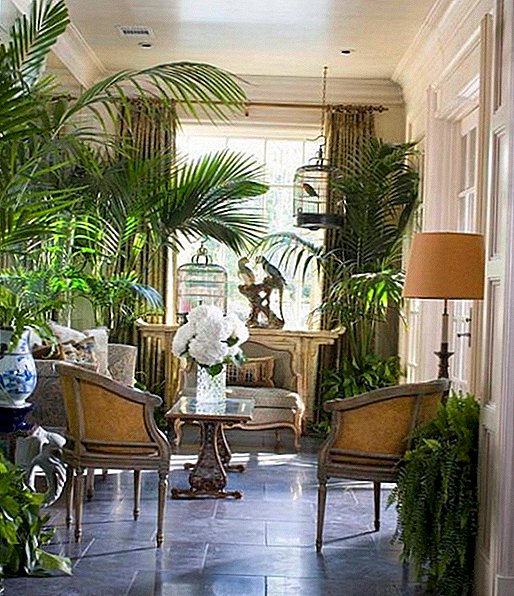 Attitudes to houseplants are different for everyone: someone does not start them at all, someone prefers orchids, cacti or violets, someone prettier geranium. But some amateurs arrange a real winter garden in the apartment or house, which botanical greenhouse complexes may envy. The crown of such magnificence may well become a palm tree, a symbol of the warm ocean coast and oases of the desert. This article will help you to make a choice from the variety of the palm family, in which we briefly describe the most popular species.
Attitudes to houseplants are different for everyone: someone does not start them at all, someone prefers orchids, cacti or violets, someone prettier geranium. But some amateurs arrange a real winter garden in the apartment or house, which botanical greenhouse complexes may envy. The crown of such magnificence may well become a palm tree, a symbol of the warm ocean coast and oases of the desert. This article will help you to make a choice from the variety of the palm family, in which we briefly describe the most popular species.
Date
Phenicia, also known as Phoenix, is a genus of Palmovs, in aggregate including almost 20 species. It grows in Africa, Asia and Europe, is an ancient crop. Fruits dates - a popular delicacy, in dried and whether candied form is abundant in stores. If the fruit is not subjected to heat treatment, then it is possible to grow a palm tree at home from the bone of the purchased date.
If the fruit is not subjected to heat treatment, then it is possible to grow a palm tree at home from the bone of the purchased date.
Learn more about cultivating date palms: home care, pests and diseases.
In nature, the plant can reach 30 meters in height. In an apartment in a pot will grow to about 2 meters, it can bloom with small yellow flowers, but it will not bear fruit.
The most common species as indoor plants:
- date Robelena;
- Canarian;
- palmate.



All these palms are characterized by long, large, narrow, rigid leaves that form a broad crown. Plants are unpretentious, do not need special conditions, resistant to pests. Their only requirements are a big pot, plenty of water and light.
Did you know? The absolute record among palm trees is Kindia wax. She reaches a height of 50 meters, and her maximum age is more than 120 years. Being a national plant of Colombia, it grows only in one place - the high-mountainous valley of Kokora.
Washington
Tree palm Includes two types - sturdy and sturdy. It grows in the subtropical regions of the United States and Mexico, in the open field is used as an element of landscape design.  Washingtonia is yarn-bearing In contrast to the date palm, whose leaves begin almost at ground level, Washingtonia has a rather high trunk. Its leaves are pinnate, round, reaching one and a half meters in diameter. Drying up often remains on the trunk, which gives Washington a rather amusing appearance - its crown is supposedly divided into upper green and lower yellowish-gray parts. In nature, it reaches 25 meters in height and almost 1 meter in diameter of the trunk; it is resistant to short-term frosts.
Washingtonia is yarn-bearing In contrast to the date palm, whose leaves begin almost at ground level, Washingtonia has a rather high trunk. Its leaves are pinnate, round, reaching one and a half meters in diameter. Drying up often remains on the trunk, which gives Washington a rather amusing appearance - its crown is supposedly divided into upper green and lower yellowish-gray parts. In nature, it reaches 25 meters in height and almost 1 meter in diameter of the trunk; it is resistant to short-term frosts.  Washington is strong Due to its rapid growth, it is more suitable for office premises with high ceilings. It tolerates coolness and dryness, but is sensitive to stagnant air. In conditions of closed premises almost does not bloom.
Washington is strong Due to its rapid growth, it is more suitable for office premises with high ceilings. It tolerates coolness and dryness, but is sensitive to stagnant air. In conditions of closed premises almost does not bloom.
Did you know? This palm got its name in honor of one of the founding fathers and the first president of the United States - George Washington.
Hovey
Khovey grows only on one small island in the Tasman Sea - Lord Howe, whose area is slightly more than 14 square meters. km The export of its seeds and tourism are the two main sources of income for the island’s economy.
There are 2 types of this palm:
- Forster (high, more resistant to cool).
- Belmore (undersized with small leaves).


In nature, the Howay grows up to 15 meters, has large (up to 4.5 meters) leaves and a magnificent crown. Propagated by seeds.
In a pot, the maximum height is 2 meters, it grows slowly, does not bloom.
The palm tree loves high humidity, is sensitive to polluted air, but at the same time it is undemanding to lighting.
Khoveya often presents unpleasant surprises to the owners: her leaves dry, and, if not taken proper measures, she will die.
Rapis
Fan bamboo palm, which is also called stick and whiplike. Her homeland is Asia, namely Japan and China. The genus Rapis includes about 15 species, but most often in the form of a houseplant there are 2:
- Rapis tall (up to 3 meters, with dark green segmented leaves, does not bloom indoors);
- Papis is low (up to one and a half meters, thin-stemmed, leaves are small, rarely blooms).


Very unpretentious plant, adapts to almost any lighting, except for shade and direct sunlight. Well tolerate heat, picky in irrigation (the main thing - do not dry or pour).
Important! Since the root system of the rapis is shallow, but branched and expanding in breadth (in fact, it is a collection of several palm trees), it needs a special pot - low, but wide.
Karyote
It grows in the tropics of Asia, India, Australia, the Solomon and Malay Islands. In nature, there are about 10-13 species that easily interbreed with each other.
The height reaches a maximum of 25 meters, they live for a short time, about 20 years, they die after flowering. A characteristic feature of this palm tree is its large, wide leaves, divided into 2 or more segments, with rough, as if torn edges, associated with fish or horse tail
As a houseplant there are 2 types:
- The most common type of cariot is tender (it is also soft). In height at home it grows up to 2.5 meters, it is actively growing in breadth.
- Less popular is the form of cariotica tartarium (stinging), which got its name because of bright red fruits saturated with acid.


Karyota requires high humidity, otherwise unpretentious.
See general palm tree care guidelines.
Cryosophila
Cryosophila spanish is from Central America. There it grows in tropical forests. As a home plant, it is not widely distributed, more often it can be found in greenhouses. A characteristic feature - bright green leaves, branched into wedge-shaped segments. Resistant to dryness and lack of light.
Important! Almost all palm trees are tall and grow pretty quickly. To regulate their growth, transplant the plant into a larger pot only when the roots are noticeably short of space.
Hamedorea
Small, up to one and a half meters in height, slowly growing palm comes from the tropics of Mexico. In terms of the apartment is good, thanks to unpretentiousness and pomp (which is achieved by planting several plants in one pot). The leaves are light green, lush, about half a meter long.  Hamedorea is one of the few palms blooming in a pot. It blooms at a young age, releasing light yellow, round, small flowers on green legs. They do not smell, but they become berries. Palm is unpretentious, likes abundant watering. Its only drawback is a short life (about 6 years).
Hamedorea is one of the few palms blooming in a pot. It blooms at a young age, releasing light yellow, round, small flowers on green legs. They do not smell, but they become berries. Palm is unpretentious, likes abundant watering. Its only drawback is a short life (about 6 years).
Read also about the cultivation of Hamedorei at home (from seeds).
Liviston
Very beautiful palm tree originally from Southeast Asia. Prefers a tropical climate, growing rapidly.  The leaves are large, shaped like a fan with jagged edges, forming a wide, dense crown. Unpretentious, but sensitive to excess watering.
The leaves are large, shaped like a fan with jagged edges, forming a wide, dense crown. Unpretentious, but sensitive to excess watering.
Learn more about liviston rotundifolia: palm care, ways to fight disease.
Despite its exoticism, palm trees do not require special conditions. They are quite suitable for apartments, well coexist with other plants. The choice can be guided solely by aesthetic preferences, because such a beautiful plant, no doubt, will be the main decoration of the interior.


